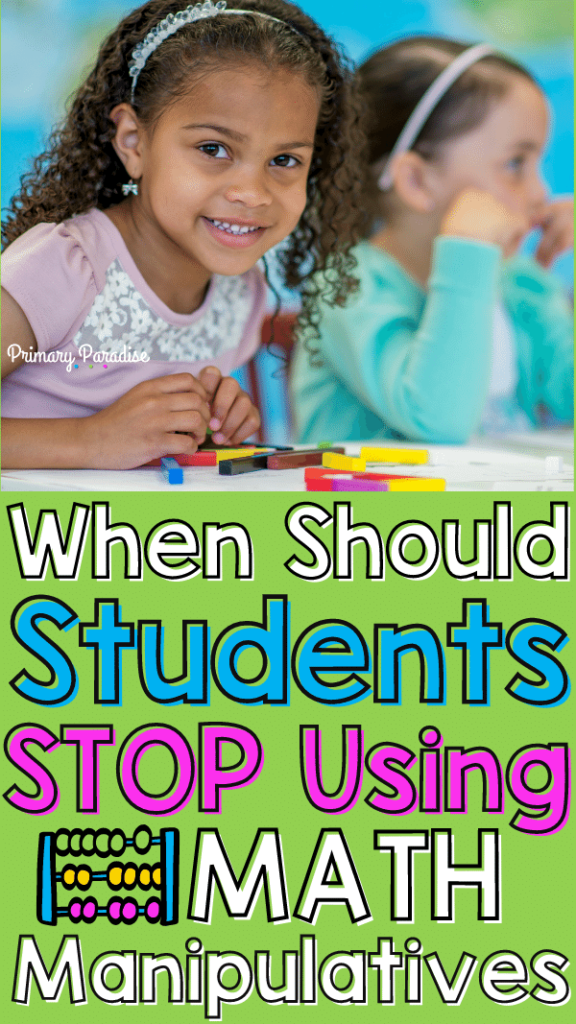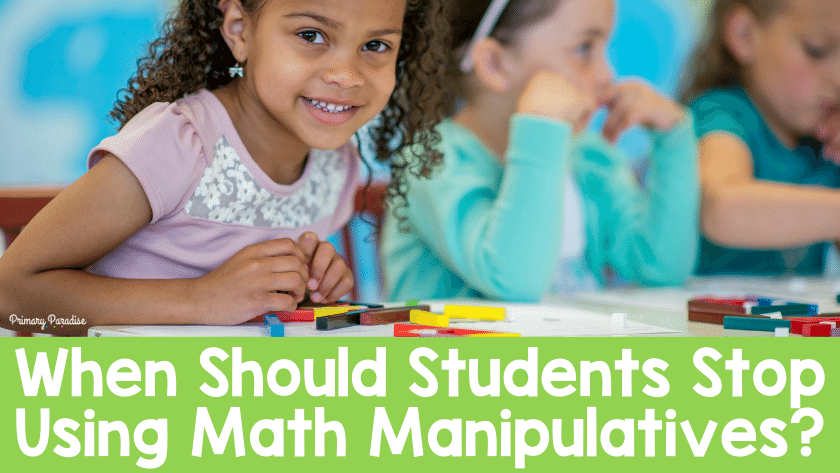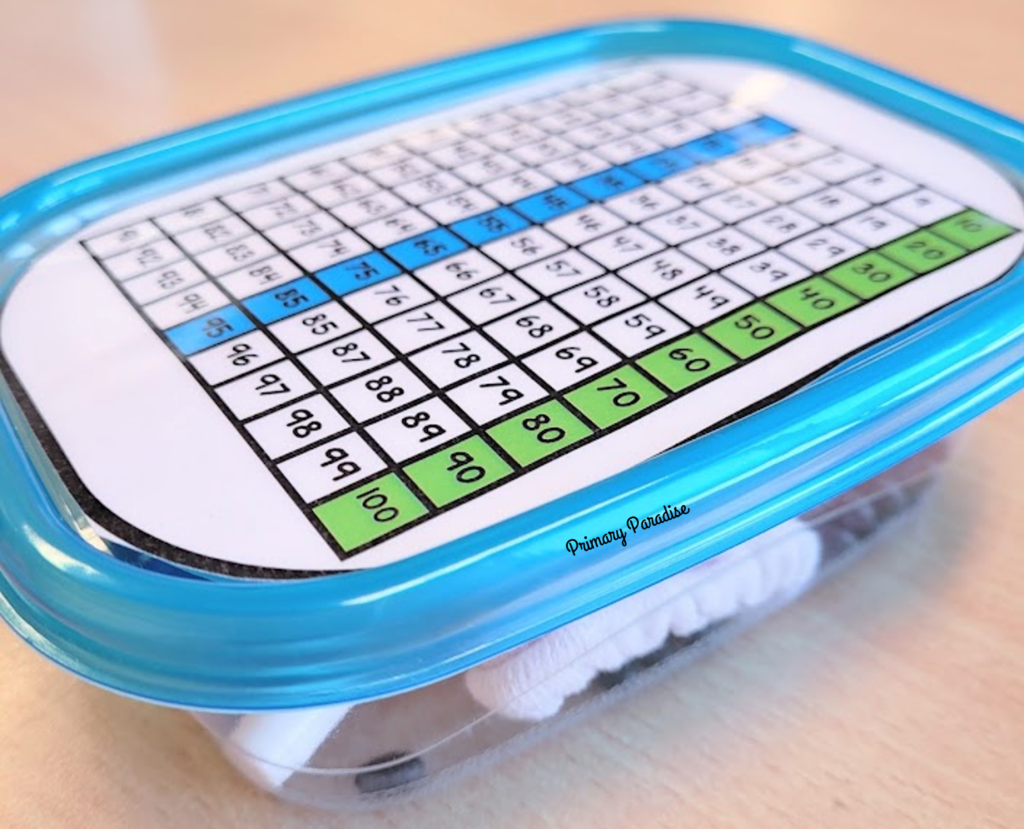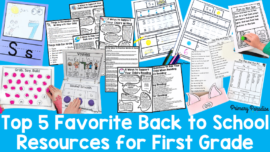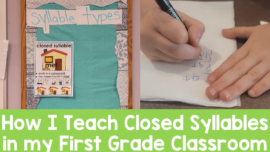Math manipulatives are handy tools to help make math concepts concrete for your students. But, when is it time to give up the math manipulatives? When must students know how to solve problems without concrete support? The answer might just surprise you. Here’s when your students should stop using math manipulatives along with reasons why math manipulatives are helpful.
Why Students Need Math Manipulatives
I often see teachers and parents totally stressing about needing to get their students/children to stop using their fingers to count and add or stop using a number line or base ten blocks or cubes and so on. Their worry normally comes from genuine concern for their children and students. We want our them to grow up into fully functioning, capable adults. We don’t want them to have to pull out snap cubes in the middle of the grocery store. So, we say things like, “They need to memorize it!” or “They should just be able to do it in their head!”
Okay, sure. The goal is for our students to be able to do as much math mentally as possible, but here’s the thing. Math manipulatives such as base ten blocks, fingers, drawing, cubes, counters, and acting it make sometimes abstract math concepts real to our students. They serve an important and helpful purpose.
When we make it concrete and tangible for our students, we give them the tools they need to understand, and they will eventually not need those tools because they’ll have internalized that math. But, everyone needs to use math tools and strategies, and that’s okay too.
Why We Shouldn’t Rush to Get Rid of Math Manipulatives
If you had a second grade who was still struggling with CVC words, would you tell them that it’s time to work on multisyllabic words? No. I doubt you would because you know they don’t have the firm phonemic foundation they need. As much as you might want them to be ready to tackle more complex words, forcing them to do so will only frustrate them.
Getting rid of math manipulatives works in a similar way. Although we might start to feel like students shouldn’t need them, it’s important to allow them to use them as long as needed as we continue to help them build their mathematical thinking skills.
Here are three reasons not to try to rush students.
1. We can’t force students to be ready before they’re ready. And if we try, it will likely mean they don’t actually understand the math. Will they possibly figure out how to get the right answer? Sure. I think many adults are walking around today and can get the right answer for math that they don’t truly understand. But, that doesn’t mean they really understand what they’re doing.
2. Not everyone is great at mental math, and there are times everyone needs to use a tool to solve a math problem. I’m 33 years old and still use my fingers, at times, and have to write or draw to figure things out at times as well. There’s nothing wrong with allowing our students to use tools.
3. It is much better to have a student who knows how to solve a problem, why they’re doing it that way, and feel confident in their choice of tools than a student who can tell me the answer but has no clue why.
So, When Should Students Stop Using Manipulatives?
The simple answer is when they’re ready. Let them draw it, act it out, or use manipulatives as long as they need to. They will eventually get it, and they’ll probably have a much more solid mathematical understanding than if they just memorized how to get the correct answer.
What About When Parents are Concerned?
Pushback from parents when it comes to math can be tricky to handle. Parents might just want their child to memorize it or do it “the normal way”. My advice is to first listen to their concerns, and talk to them about why you’re teaching math the way you’re teaching it, and then give them this free math support guide for parents so they can help support their child’s learning at home.
Looking for a great way to store math manipulatives? You can download this math box hundred chart, number line, and ten frame template in my free resource library. It’s a great way to provide students with the math manipulatives and support they need.
Keep learning. Here are more articles you’ll love.
- Free Printable Math Guide for Parents
- Breaking Down Common Core Math Standards for 1st and Second Grade
- Hands On, Low Prep Math Centers
